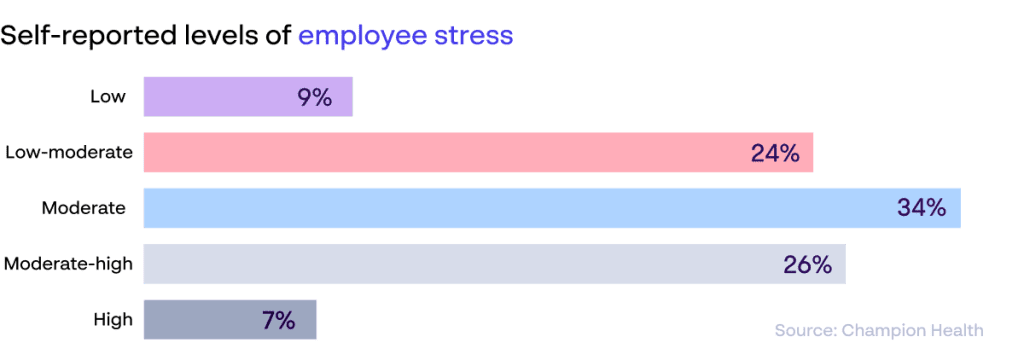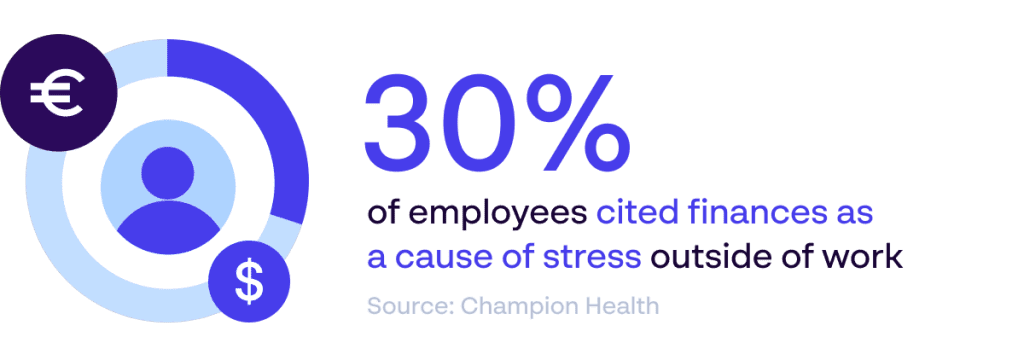Working consumes the majority of our adult lives, and while not everyone is lucky enough to have a career they love, everyone should have the security of a job, and a work environment that supports their mental and physical wellbeing.
In the past, both large and small companies have been criticised for placing ‘profit over people’, resulting in poor working conditions and employees being overworked and underpaid. Thankfully, this appears to be a declining trend as workplaces become more competitive in their talent recruitment.
Although we are unlikely to see a world where the ‘profit over people’ mentality is completely absent in our lifetimes, we are seeing strong employer brands emerge. This powerful employer branding serves to realign expectations, drive change and create better opportunities for work-life balance within their organisations.
How to prevent burnout and stress
A company’s operational and organisational structure plays a key role in the level of burnout found within a business. Levels of stress are perpetuated by lack of planning, management, staff and organisation, and will impact your employee retention levels.

Preventing burnout and stress is an ongoing effort, but here are 3 powerful strategies for prevention:
#1 Have regular project planning meetings. Attend these meetings with a full understanding of team capacity. When booking time in, ensure you leave room to allow for ad hoc tasks.
#2 Put regular task management reviews in place, alongside quarterly team structure meetings. Determine the full remit of responsibilities for each team member and ensure they are communicated, this way they can flag any requests coming to them outside of their duties. This will also help you identify talent acquisition needs.
#3 Create a culture of ‘working smarter not harder’. Encourage employees to find new and innovative ways to do their job to improve employee retention. This could be anything from investing in tech and software to hiring interns and this will go a long way to fostering employee engagement.
Flexibility and work-life balance
Trying to attain work-life balance shouldn’t be an extreme juggling act. Working weeks that consist of over 40 hours have long been seen as the ‘standard’ to earn a decent living, but this perception is changing.
While not everyone can offer reduced hours, offering flexibility in terms of when and where an employee works as part of your company culture could make a huge difference to their quality of life.
Remote work may cut hours off a commute each day. This could be the difference between someone seeing their child before they go to bed or not. Flexi-hours may also allow employees to leave for work later, creating space for some quality personal time working out in the gym before heading to the office. Flexibility at every level offers benefits to employees, and in the long-term will help enrich their lives and make them less likely to take time off due to mental or physical health issues, and will ultimately reduce employee turnover.
Team leaders and management can help encourage a greater work-life balance by:
- Discouraging working at weekends
- Encouraging taking full lunch breaks
- Ensuring annual leave is taken in full
- Leading by example by adopting healthy at-work habits
Not only will teams be more happy, engaged and productive, they will begin to build an emotional connection to your company, which will help towards employee attraction, as they will become advocates for potential future hires
Financial security and benefits
Financial stress can affect mental and physical wellbeing on a range of levels.

Fair pay and performance-based increases will keep employees feeling appreciated and motivated. But financial security can extend far beyond this. Offering attractive employee benefits are another way employees can be supported, such as:
- Access to financial support and advice
- Share and ownership options
- Life assurance policies
- Health insurance for employees and their families
- Assistance with retirement and pension planning
Relationships, workplace dynamics and leadership styles
The way colleagues interact with each other can have a far-reaching impact on the company culture, general happiness and day-to-day atmosphere within the business.
For example, a secretive closed-door environment could encourage rumours to spread or end up ostracising employees, resulting in high levels of stress, low mood and the development of a toxic work setting. Strict rules and micromanagement could also see employees become stagnant, stressed or nervous when they come in each day.
Here are 4 ways to develop good workplace culture and how you can keep your employees comfortable with their working relationships:
#1 Foster a workplace culture where autonomy is encouraged by managers, and employees are empowered to make decisions within their remit. Anything out of a worker’s control should be highlighted early on in employment, with boundaries firmly set and understood.
#2 Open-door policies or regular one-to-ones give employees the chance to speak about how they’re feeling, and can help discourage gossiping within teams. By encouraging active conversations, problems can be listened to and addressed before they escalate.
#3 Communication should be frequent and ongoing. Regular team meetings and updates on the company as part of your company culture will help employees feel included and in-the-loop.
#4 A clear, formal route for escalating problems to HR should be in place. If someone is being bullied, experiences inappropriate behaviour or has witnessed something immoral, they should feel safe and confident in reporting it through the official channels.
So how do you motivate staff and improve employee engagement
Money might help the world move but it doesn’t always take employees where they want to go. It’s so important for individuals to be seen as just that, themselves, and never just another cog in the machine.
With the right career development path and ongoing Continuing Professional Development, employees will begin to appreciate your interest in them and this will enhance your employer brand. Likewise, understanding their personal goals can help you build a better picture of their career path and what motivates them.
For example, if they want to buy a bigger house, the incentive of a pay rise will drive them. Or, if they plan to have a family, a more flexible work schedule would be more appealing for some.
In sickness and in health
While not every company can offer the best health insurance policy, it’s important that some kind of investment is made into employee wellbeing, for attracting and retaining talented employees. Whether that’s a basic health plan for all, an upgrade to safety equipment, the introduction of regular exercise clubs or free access to mental health therapy, as well as considering diversity and inclusion in your policies — there are so many ways organisations can support teams in these modern times.

Health, safety and wellness needs to be of paramount importance for employers. If it isn’t, employee turnover will be high – people will leave their positions in droves, in search of greener pastures with competitors.
Managing a strong employer brand with our brand management platform
The foundations of a strong employer brand lie within you, your team and what your company stands for. Ultimately, you can’t build a desirable company to work for if employee mental and physical health aren’t looked after.
Managing communications for your internal teams and externally to prospective candidates can be time-consuming, confusing and costly. At Papirfly, our all-in-one brand management platform is central to any employer branding strategy and helps to bring your employer brand to life. It puts the power of creation back into your hands, and gives teams autonomy to build all the assets they need – without needing to be designers.
So, whether you need to get a video promoting a role out in the next half hour, artwork created and printed for a recruitment fair or employee comms made and distributed urgently, you can do all of this and more with our brand management platform.
Find out more about Papirfly for employer branding teams or book your demo today to see our brand management platform in action.











